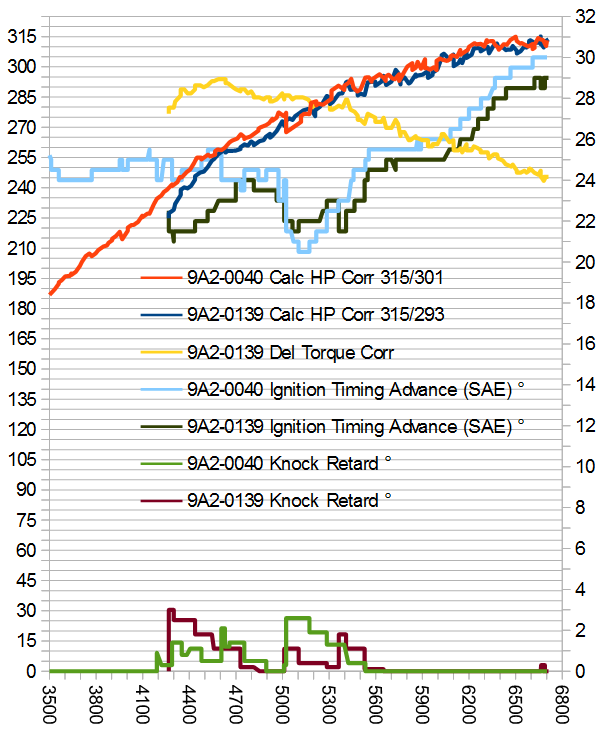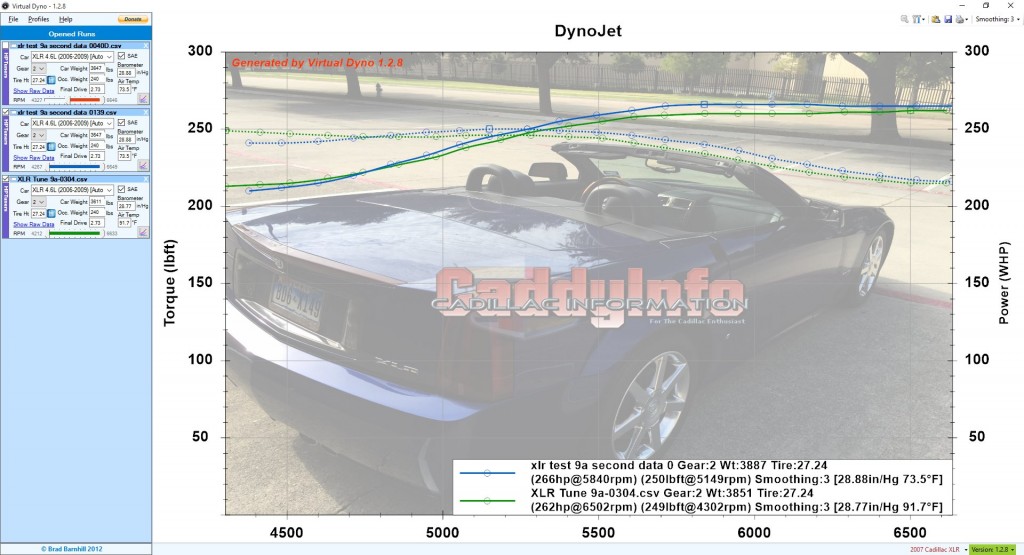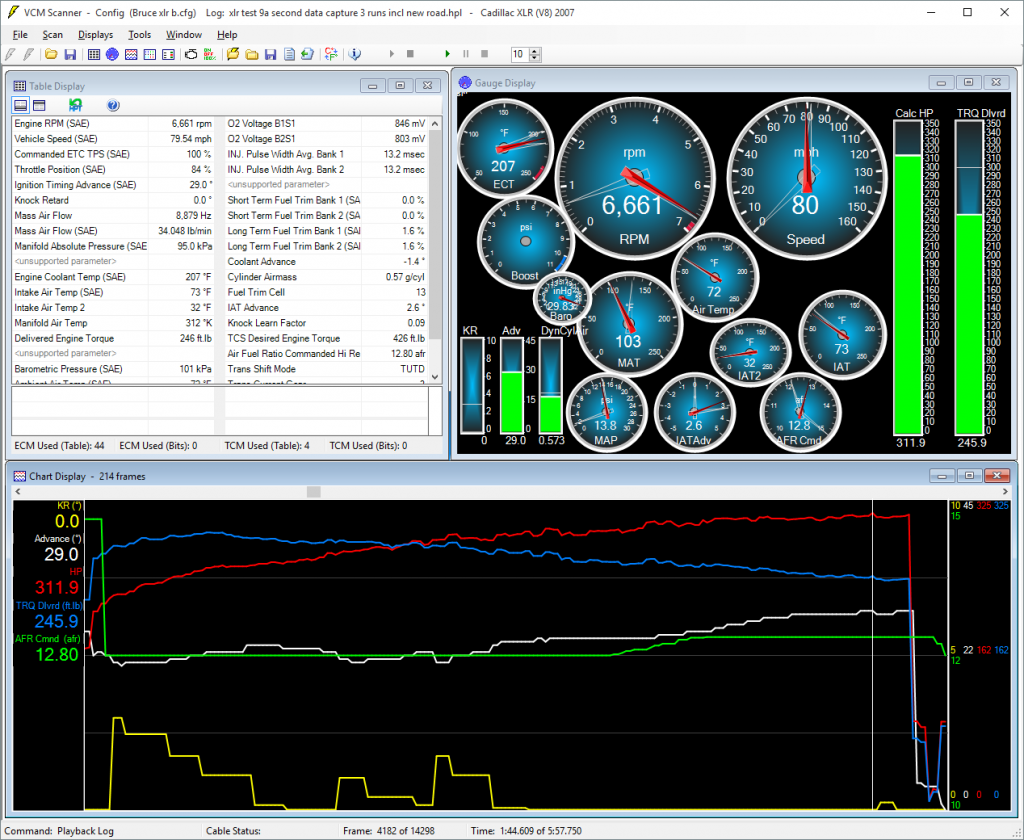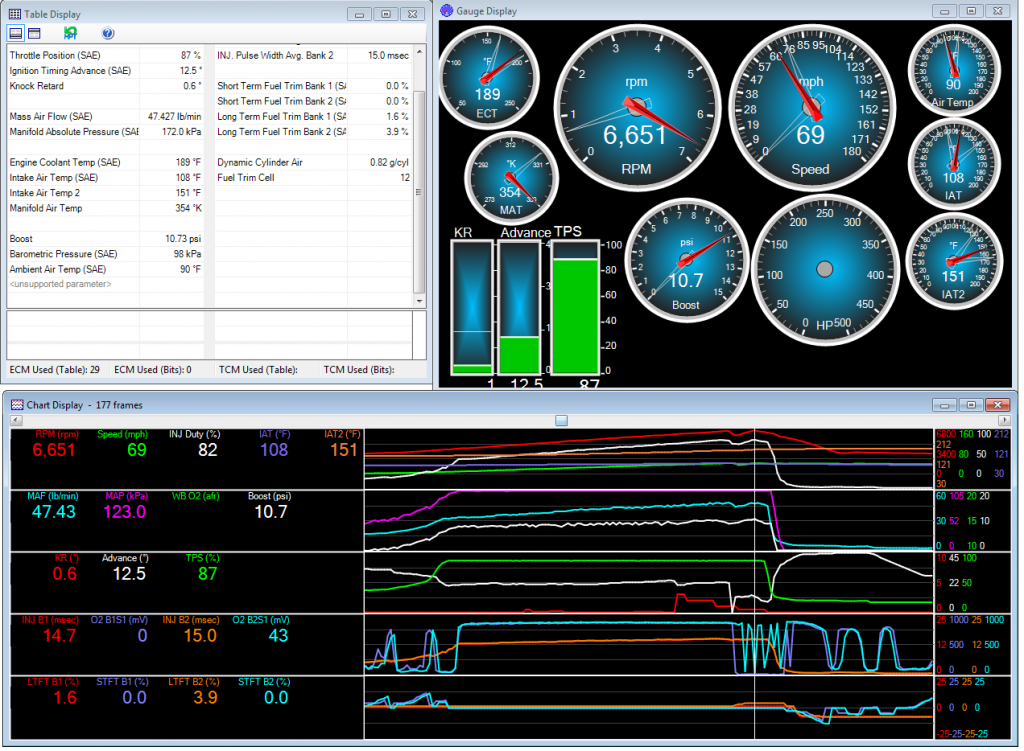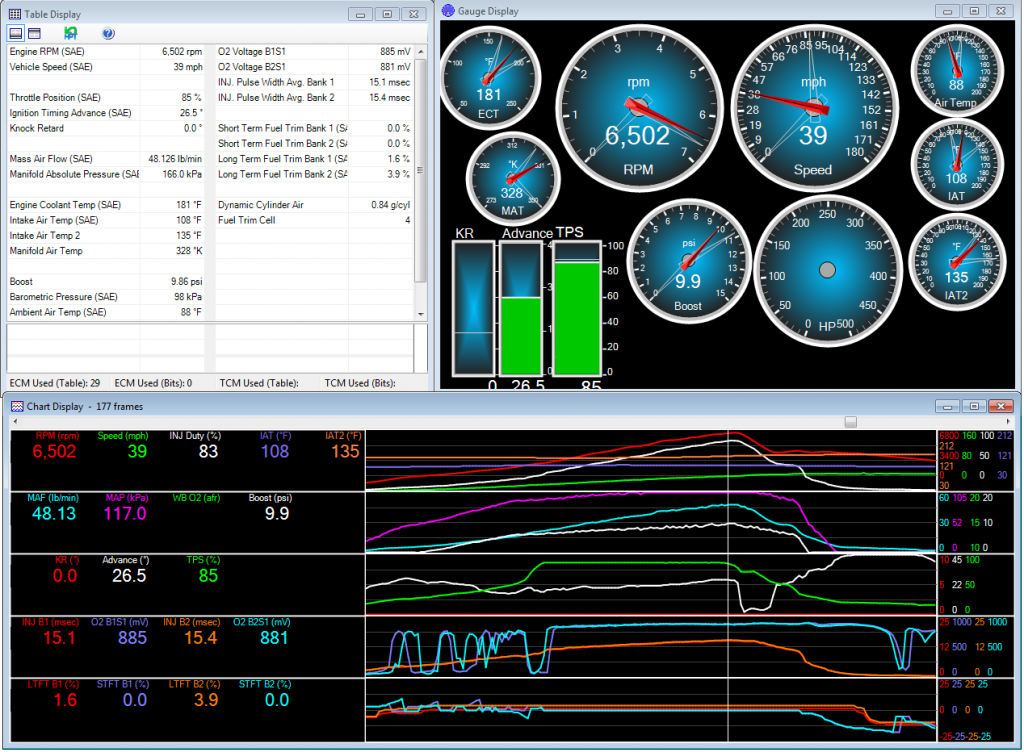
I am starting to run driving scans on my 2016 ATS-V to get a feel for how the engine operates. The LF4 twin turbo 3.6L engines use a torque management based strategy. The control sorts out what torque is desired, then manages the powertrain to make that torque, independent of throttle input. The throttle input (gas pedal) is treated as a request — so you might have the pedal on the floor, but if the engine is making over 100% of the torque planned at that moment, the actual throttle may close to maintain the torque to the planned levels.
In the image above, the Cadillac is accelerating through 61 mph, at 5313 RPM. The pedal is at 100%. The actual throttle however, is at 67.8%. The ATS-V was making “too much” power at that moment. If you examine the 2nd row in chart vs time, the green line is throttle %, so where we see dips in the green vs yellow line is where the ATS-V is reducing engine power to desired or planned output.
In this case, at this point, the total boost pressure of 31.5 psi (without adjusting for baro) was higher than the Desired Boost pressure of 30.7 psi. So the engine controller is pulling back the throttle because too much power is being made.

I also note that the stock file is running a few points of KR, or knock retard. There is a ramp up of the planned advance in that range. The engine controller goes from a spark advance of 8 degrees up to 10.5 then down to 10 degrees. That appears to be too much since the KR (knock retard) is going to 2-3 degrees there. Although it is possible that a richer air fuel ratio (AFR) would be fine.
The ‘stock’ commanded AFR is 12.8, lamda 0.909 equivalence ratio commanded. This is within the range of what most tuners are doing with the LF4 direct injected V6. This ATS-V may prefer to be slightly richer, but needs more research.
Correction Factor: Ambient air: 72F, Intake air 75F. Baro 29.5223 inHg, 83.13% humidity so SAE J1349 correction of 1.01555. 453.6 hp corrects to 460.7 hp.

